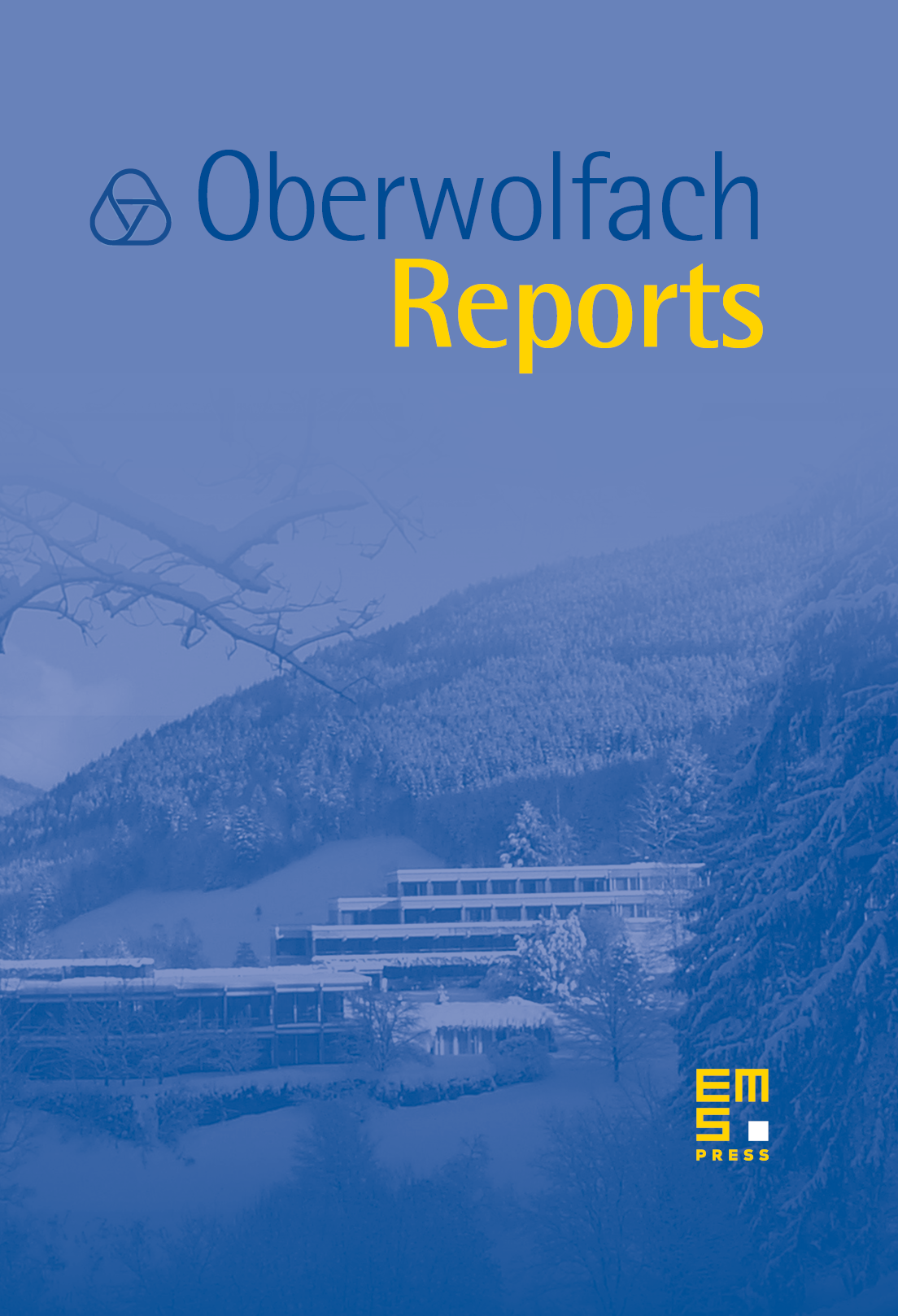Kommutative Algebra
Winfried Bruns
Universität Osnabrück, GermanyHubert Flenner
Ruhr-Universität Bochum, GermanyCraig Huneke
University of Kansas, Lawrence, United States

Abstract
The workshop on Commutative Algebra was very well attended by the important senior researchers in the field and many promising young mathematicians. A major subgroup of the participants was formed by researchers in affine geometry, a neighboring field that has strong interactions with commutative algebra.
The NSF Oberwolfach program made it possible to increase the number of young participants considerably, and the organizers are very grateful to the NSF for its support.
The conference took place in a very lively atmosphere, made possible by the excellent facilities of the institute. There were 53 participants and 19 talks with a considerable number of lectures given by young researchers. The program left plenty of time for cooperation and discussion among the participants. We highlight the areas in which new results were presented by the lecturers:
(a) Characteristic -methods Starting with the landmark results of Peskine and Szpiro, characteristic methods have had a extremely strong influence on the development of commutative algebra. They were crystalized by Hochster and Huneke in the notion of tight closure, and have led to remarkable results in ideal and module theory.
(b) Combinatorial commutative algebra and effective methods The spectacular applications of commutative algebra to enumerative combinatorics two decades ago have developed into a subfield of commutative algebra that is very active now. The main objects are algebraic structures defined by monomials, in particular face rings of simplicial complexes and affine monoid algebras. Another driving force of this development are the powerful effective methods based on Gröbner bases since they ultimately rely on monomial computations.
(c) Homological methods and invariants This area started from the fundamental theorems of Auslander, Buchsbaum and Serre on regular rings. Homological properties are used in the major classification of commutative rings and their modules. In the last decade considerable progress has been made through the use of differential graded algebras, derived categories and the duality between the polynomial ring and the exterior algebra.
(d) Multiplier idealsThe multiplier ideals of an ideal constitute subtle invariants of the singularity defined by . Originally defined in analytic terms, they have now been applied to algebraic problems and have led to surprising results in ideal theory, especially on uniform bounds for the asymptotic behavior of various kinds of powers of an ideal.
(e) Affine geometry Affine geometry deals with algebro-geometric questions of affine varieties. The talks concerned actions of the additive and multiplicative groups and on affine varieties and, in particular, the affine space. Moreover there were lectures on the famous Jacobian problem and possible generalizations to other varieties. In many of the contributions the close ties to commutative algebra became apparent and led to fruitful discussions.
Cite this article
Winfried Bruns, Hubert Flenner, Craig Huneke, Kommutative Algebra. Oberwolfach Rep. 2 (2005), no. 2, pp. 1073–1126
DOI 10.4171/OWR/2005/19